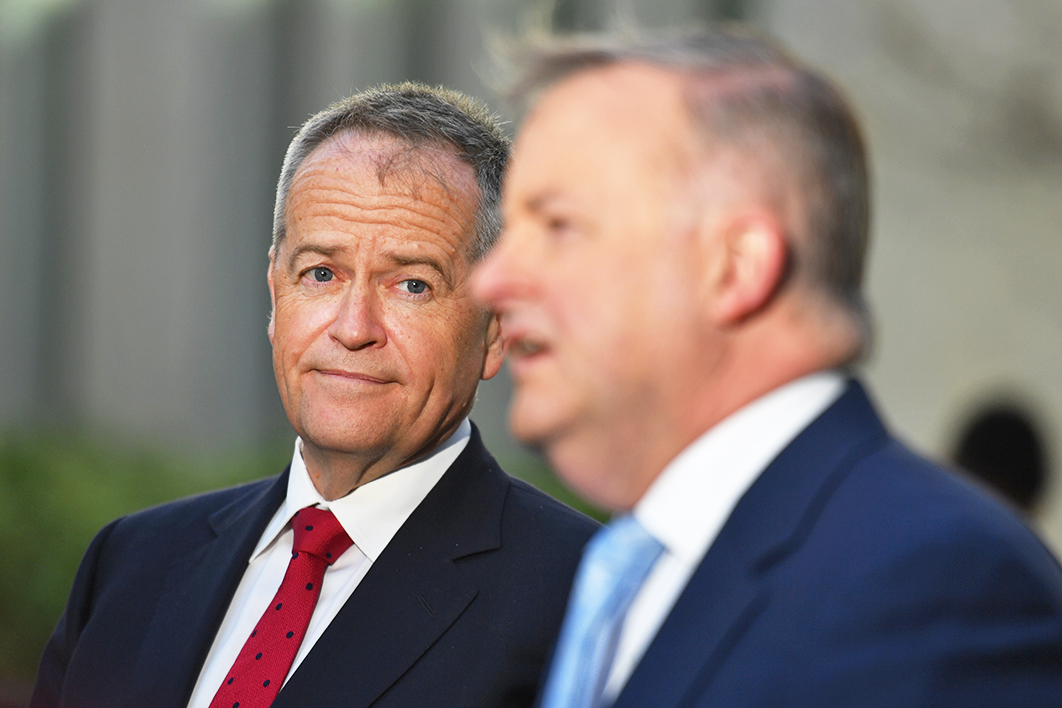Newspoll this week produced yet another headline 53 to 47 per cent lead for Labor after preferences. This one is off primary support of 36 per cent for the government, 38 for Labor, 10 for the Greens, 3 for One Nation and 13 for others.
This is on song — in two-party-preferred terms at least — with all the other public pollsters except for the Nine papers’ Resolve, whose most recent outing gave the Coalition a whopping seven-point lead in first preferences, 39 to 32 per cent, which would translate to a small Coalition lead of about 51 to 49 in two-party-preferred terms. If Resolve keeps this up, the possibility of wall-to-wall pollster “herding” will not be a problem during this election campaign.
The Australian is headlining another finding: that a plurality of voters, 47 per cent, believe Labor will form government after the next election, 37 per cent think the Coalition and the rest aren’t sure.
Now, some political observers believe the expectation of a win is a good thing because it generates momentum and becomes a self-fulfilling prophecy. Your correspondent is definitely not in this camp.
Yes, expectations and outcome have correlated across electoral history. As they say in the classics, though, correlation doesn’t equal causation. Sure, the polls point to a likely victor, which largely generates expectations, directly and indirectly. But rather than millions marching dreamlike to vote for X because everyone else is — because the media says it’s so — the opposite is the case: it’s usually better to be the underdog because some voters are tempted to mitigate an expected big win.
During the 2019 campaign the Coalition seemed to grasp this, while Labor, by all appearances, believed playing up the likelihood of victory was just the ticket. We saw how that turned out.
The good news for Labor is that this time the expectations are not so one-sided. Once bitten by the opinion polls, voters are twice shy. And a prime minister who pulls off an unexpected victory will always be given some benefit of the doubt. In early December 2018, before all that happened, Labor was favoured by much more, 55 to 24 per cent, than it is now.
Back then, most of the commentariat were convinced a change of government was on its way. They could just feel it; they could smell the government’s decay. They had internalised the polls, and found further reassurance in the chaotic August change of Liberal leadership and in the November Victorian Labor landslide.
This week’s 47–37 lead on expectations — 56–44 if you exclude undecideds — actually seems surprisingly optimistic for Labor, given what happened last time.
Over in the United States the polls got it wrong in 2016 and got it wrong again in 2020, by about the same amount. The difference the second time was that Joe Biden’s surveyed lead over Donald Trump was about twice what Hillary Clinton’s had been four years before.
On that basis, Labor would want an election-eve lead next year significantly better than 2019’s average 51.5 to 48.5 per cent to feel confident of victory. (The result three years ago was 51.5–48.5 the other way.)
Right now Labor leads by roughly 6 to 8 per cent in all the polls except Resolve. A 2019-style 6 per cent error would put Labor on 51 or 50, which would be a probable (though messy, and perhaps in minority) government win. But we shouldn’t really compare today’s polls with those in the dying days of last election’s campaign. In December 2018, Labor was ahead by about what it is now, or a bit less.
As a rule, it’s best to be the underdog, but this can be complicated by another factor: the prospect of a minority Labor government reliant on Greens and independents. The Coalition has long believed it is in its interests to play up this scenario, and while it hasn’t really got much traction in past contests, this time the Greens are also pushing it energetically.
As most voters prefer majority governments, and some can even change their vote between the major parties to ensure this, that factor adds another dimension to the expectations game. It possibly played a part in that unexpectedly big Victorian result three years ago — Labor’s going to win, let’s make sure Dan Andews has a majority — but it can also work the way the Coalition wants it to. •





